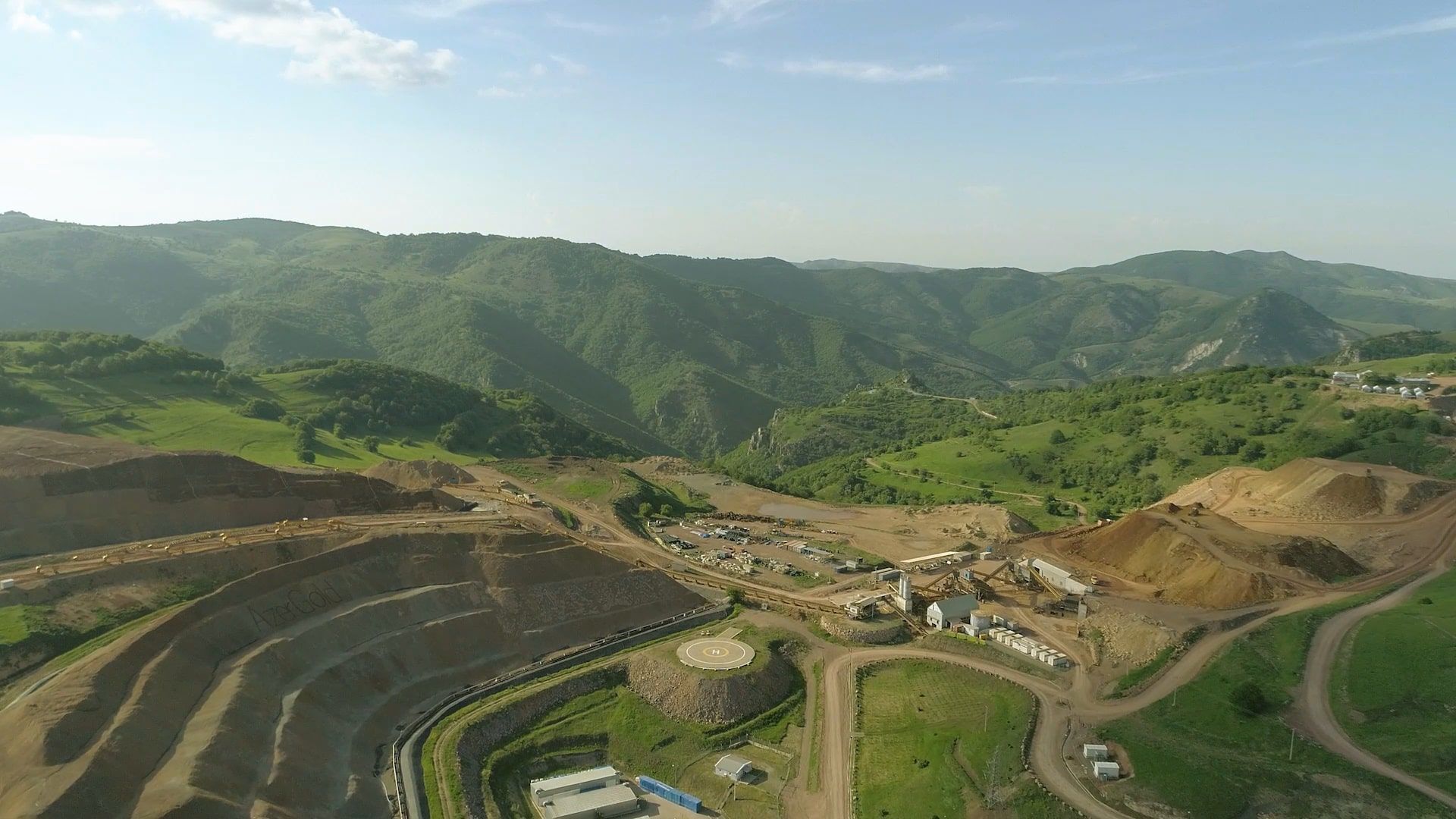New enrichment plant to be built in Dashkesan

Dashkasan Demir Filiz LLC, a subsidiary of AzerGold CJSC, successfully continues to prepare the Dashkasan iron ore deposit for exploitation, Azernews reports.
It should be noted that mining operations at the largest complex of deposits of ferrometallic ores in the South Caucasus, discovered in 1860-1870s, started in the times of the USSR. The Dashkasan Ore Department was established for this purpose in 1945. According to the project, the iron concentrate produced since 1954 was delivered by rail to the steel plant located in Rustavi, Georgia. After Azerbaijan regained its independence, iron ore production was interrupted as the production chain established between the union republics was disrupted. From 1994 to 2017, the deposit was partially exploited.
A new stage in the development of the Dashkasan iron ore deposit
In 2020, according to the relevant orders of the President of Azerbaijan, the works related to the commissioning of the Dashkasan iron ore deposit were entrusted to AzerGold CJSC. Dashkasan Demir Filiz LLC, established as a subsidiary company in connection with the project, started preparations for exploitation. To this end, at the initial stage, studies were conducted to assess the mineral resources of the North-West and South-East deposits. As a result, an increase in underground resources of 69.7 million tonnes was achieved at both deposits. At the same time, the total mass of ore reserves for all deposits of the Dashkasan iron ore deposit reached 309.16 mln tonnes. In accordance with the 21-year plan for the development of these deposits, mining operations started at the South-East mine in June 2022. Over the past period, the Southeast mine has collected 6.5 mln tonnes of overburden and 1.8 mln tonnes of ore reserves.
However, appropriate analyses are underway to re-extend the mineral reserves that can be economically mined at the South-East and North-West mines and to extend the operating period to 23-27 years. To this end, geochemical analyses of drill samples have been carried out. As a next step to achieve growth, it is planned to engage an international consulting firm to reassess the size of the Mineral Resource and prepare a new mine plan.
Building a new production chain
In order to ensure the cost-effective and sustainable operation of these mines, the project strategy was developed by the internationally experienced and reputable Boston Consulting Group. The analysis identified the creation of a phased production process for the project as the optimal solution. As part of this solution, it was decided to produce hot briquetted iron (HBI - Hot Briquetted Iron) with an iron content of 95%, which is used in the steel industry from iron ore as a final product.
It should be noted that the relatively low iron content of the ore rocks of the Dashkasan iron ore deposit (40 % on average) makes it necessary to enrich these ores to at least 67 %. For this purpose, it is planned to build an Enrichment Plant for the production of iron concentrate as the initial stage of the production chain. At the next stage, the infrastructure for pellet production will be built - a pelletising plant to ensure the mechanical and chemical compatibility of the enriched concentrate as a raw material. The intermediate product pellets will then be sent to the HBI plant to produce an HBI product with an iron content of 95%.
The project plans to construct a concentrator at Dashkasan, on the site of the Mining and Processing Plant, which was built adjacent to the mine during the Soviet era and is currently unsuitable for production. The lack of a suitable area in the area with mountainous terrain to accommodate the pellet and HBI plants, as well as the necessary energy sources (electricity, gas) to operate the plant outside of residential areas, and the limited logistical opportunities to deliver the final products to steel producers, led to the need to build these two plants in adjacent areas. As a result, the decision was made to build the pellet and HBI plants in the Geigel district.
In the past, concentrate mined from the Dashkasan deposits was transported to the next destination by ropeway and railway, but this method is currently not considered to be economically and environmentally efficient. For this reason, it is planned to implement a freight link between the concentrator and the pellet plant at a distance of 45 kilometres via the Slag Pipeline.
Thus, according to the project, in the nearest period with the formation of the production chain, annual extraction of 3-3.2 mln tonnes of ore, 1.3 mln tonnes of concentrate and pellets from this ore and, finally, production and sale of ~0.9 mln tonnes of HBI raw materials as the final product will be ensured
The project has now successfully tested the process of producing high-quality iron ore feedstock under laboratory conditions. As a result of the tests, a concentrate with an iron content of 67% has been produced and then pelletised from the concentrate, with testing work continuing on the next stage.
Application of technology in line with modern environmental requirements
Global trends have been taken into account to ensure that the plants meet modern environmental requirements from the design stage. HBI technology can reduce carbon dioxide emissions by up to 60 percent compared to the classical approach . This technology will also make it possible to switch to hydrogen in the production process in the future, thus expanding the use of green technologies. As a result, the environmental status of the plants within the Dashkasan Iron Ore Project will be strengthened.
Attracting foreign investors to the project
It should be noted that according to the calculations of the "Boston Consulting Group" company, the investment cost of the project is estimated at AZN 1.7 bln. It is forecasted that by 2047, a contribution to GDP in the amount of AZN 7.5 bln will be made through the commissioning of iron ore deposits. Also, considering the direct and indirect impact of the project, which serves the development of the non-oil and gas sector of Azerbaijan, it is expected to make a significant contribution to the employment index of the Ganja-Dashkasan economic region by opening thousands of permanent jobs.
Besides positive economic and social effects, relatively low average iron content in the ore rocks mined here, a lack of direct access to the ocean waters of our country, and other factors to some extent complicate the implementation of the project, but foreign investors show sufficient interest in the project. In this regard, taking into account the high investment value of the AzerGold CJSC project, negotiations with a number of large potential partner companies regarding investor's involvement in the process are ongoing in order not to create an additional burden on the state budget.
After an evaluation of the proposals and conditions of all interested parties, the implementation of the project will be ensured in the most favourable form for our country and people.
---
Follow us on Twitter @AzerNewsAz
Here we are to serve you with news right now. It does not cost much, but worth your attention.
Choose to support open, independent, quality journalism and subscribe on a monthly basis.
By subscribing to our online newspaper, you can have full digital access to all news, analysis, and much more.
You can also follow AzerNEWS on Twitter @AzerNewsAz or Facebook @AzerNewsNewspaper
Thank you!

